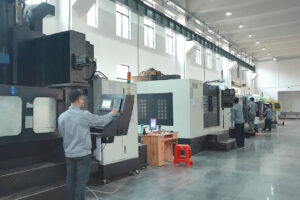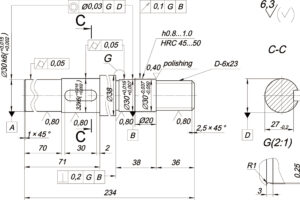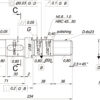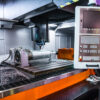Sheet metal is a comprehensive cold working process for thin metal plates (usually below 6mm). Sheet metal parts can be processed by stamping, bending, stretching, and other means and whose thickness is constant during processing. Correspondingly, castings, forgings, machined parts, etc. For example, the outer iron shell of a car is a sheet metal part, and some stainless steel kitchen utensils are also sheet metal parts. The main processes are shearing, bending, bending, welding, riveting, etc. The design and manufacture of sheet metal parts require certain geometric knowledge.
Common materials for sheet metal
Type Of Material | Common Models | Tensile Strength | Thickness | Max width | Max length |
stainless steel plate | SUS304/SUS301/SUS430 | ≥53kgf/mm2 | 0.1-10.0mm | 1524mm | 2500mm |
cold rolled steel plate | / | ≥28kgf/mm | 0.25-3.2mm | 1524mm | 2500mm |
aluminum plate | A1100P-O/A1050P/ A5052H32P/AL6061T6 | A5052H32P≥25kgf/mmA1100P,A1200P≥7 kgf/mm2 AL6061T6≥27kgf/mm2 | 0.3-20mm | 1524mm | 2500mm |
Hot-dip galvanized steel | / | ≥40kgf/mm2 | 0.4-3.2mm | 1524mm | 2500mm |
hot rolled steel plate | / | ≥41kgf/mm | 1.4-6.0mm | 1524mm | 2500mm |
copper plate | C1020/C1100/C2100/C2200 /C2300/C2400/C2600 | ≥0.3mm | 610mm | 1524mm |
6 common sheet metal forming processes
laser cutting
One of the key ways to cut sheet metal is to use a laser cutter. Laser cutting uses a high-energy beam of light enhanced by a lens or mirror to burn/vaporize material to create the cut. This is a very fast and precise method of sheet metal cutting, and because of the smaller heat-affected zone, there is less chance of warping. CO2 and fibre lasers are most commonly used and can cut materials up to 10mm thick.
- plasma cutting
The most powerful sheet metal cutting method is plasma cutting. Plasma cutting works by creating an electrical channel of extremely hot ionized gas (plasma) that melts the material to create the cut. It is an effective method for cutting materials thicker than 10mm, but the cutting precision is not the same as laser or water jet cutting.

water jet cutting
Another sheet metal cutting method is water jet cutting. Water jet cutting uses high-pressure water jets (which can also be mixed with abrasives) to create cuts in the material. It is a manufacturing method superior to laser cutting when cutting low-melting materials such as plastic and aluminum, preventing unwanted deformation.
mechanical cutting
The most traditional sheet metal cutting process. The process refers to cutting sheet metal without burning or melting it, essentially not much different from cutting clothes with scissors.
During the shearing process, the punch presses the workpiece against the fixed die or blade, and the gap between the two prevents the workpiece from passing through, thereby completing the shearing.

stamping
Sheet metal stamping uses a similar cutting mechanism to a guillotine. However, it uses a formed metal tool (called a die) for cutting. The die is forced into the metal sheet at high speed to perforate the metal sheet. Dies of standard shapes (round, square, rectangle) are typically used. However, custom tooling can be made to stamp more complex shapes. Due to the cost of making the mold, this method is more suitable for mass production.
bend
Bending is the basic manufacturing process for forming sheet metal into functional parts. Sheet metal is bent using a press brake machine, which consists of an upper tool (punch) and a lower tool (V-die). The material is placed between the tools, and the punch is pressed down into the V-die to create the bend. The bend angle is determined by how far the punch is pressed down into the V-die.

Assembly/Soldering
Cutting and bending are two ways of sheet metal forming, and assembly is the third way. Sheet metal parts can be assembled using mechanical fasteners such as bolts, screws, and rivets. Or they can be joined using a welding process, in which two or more parts are fused using high temperature and then cooled to form the connection.

Advantages of sheet metal
Sheet metal design options are very flexible. Customers can request certain features, and sheet metal materials leave room for many different solutions.
Sheet metal can be any metal – mild steel, stainless steel, aluminum, brass, etc.
sheet metal application
Sheet metal parts have many applications; almost all household appliances, buildings, etc., contain sheet metal parts, and different sheet metal materials have specific uses.
Cold rolled steel is relatively inexpensive; it is rolled at room temperature, and its thickness is limited to 3 mm, but it works well in applications that require a smooth surface. Examples include home appliances, furniture, lockers and cabinets. Cold rolled steel is also used in larger structures such as steel sheds and garages.
Stainless steel plate is an excellent material in corrosive environments and is often used to manufacture various surgical instruments, tableware, kitchen accessories, sinks, etc. In industry, it is often used in storage tanks, valves, pipes, etc.
The aluminum sheet is more expensive but is widely used throughout the industry due to its superior quality. It is corrosion-resistant and, above all, strong and lightweight, which is especially important for the transportation industry, where every kilogram of weight adds to the cost of response. Consumer products such as mobile phones and laptops usually have durable and lightweight aluminum casings in daily life.

Keyanng Sheet Metal Fabrication Services
Keyanng’s sheet metal fabrication service is a versatile solution for manufacturing high-quality sheet metal parts from all types of materials and thicknesses, where small volumes and large varieties are required. We are sincerely committed to giving you the best support; submit your project, and you will get a free quote within 12 hours!







